Both Tokyo and Osaka are buzzing megacities in Japan that are bound to excite any traveller. If you’re planning a trip but only have time to see one of these places, you might feel deeply conflicted. Don’t worry — we’ve got a point-by-point comparison of Tokyo vs Osaka that’ll help you decide which city in Japan you should visit first.
Also read: 10 Best Airbnb Homes & Vacation Rentals in Japan for the Trip of a Lifetime
1. Attractions
Tokyo
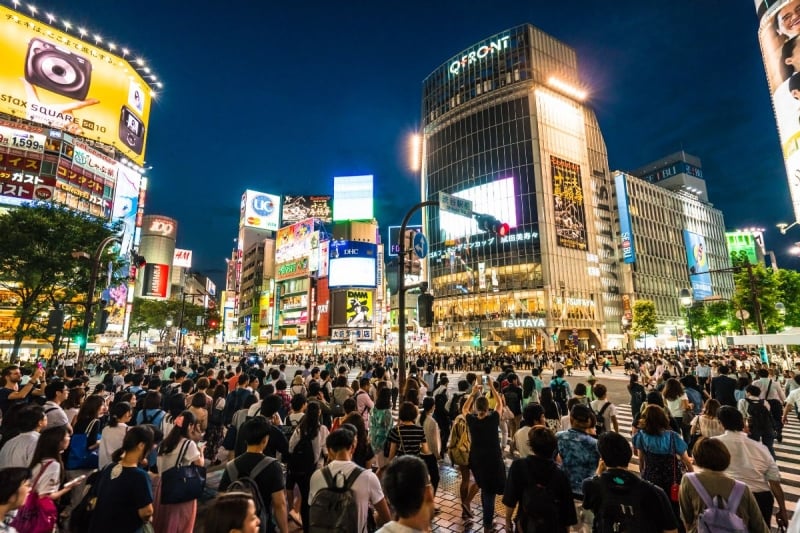
Image credit: CHUNYIP WONG via Canva Pro
Being the largest city in the world, Tokyo is unbeaten in terms of the sheer number and variety of attractions. A dizzying mix of history and modernity, the city has plenty to offer for every kind of traveller.
To see the futuristic side of Tokyo, head to Shibuya Crossing, the busiest pedestrian crossing in the world. Located outside Shibuya Station, the intersection is surrounded by gigantic TV screens that play advertisements throughout the day. Watching the swarming masses in action when the traffic lights turn green is a quintessential Tokyo experience.
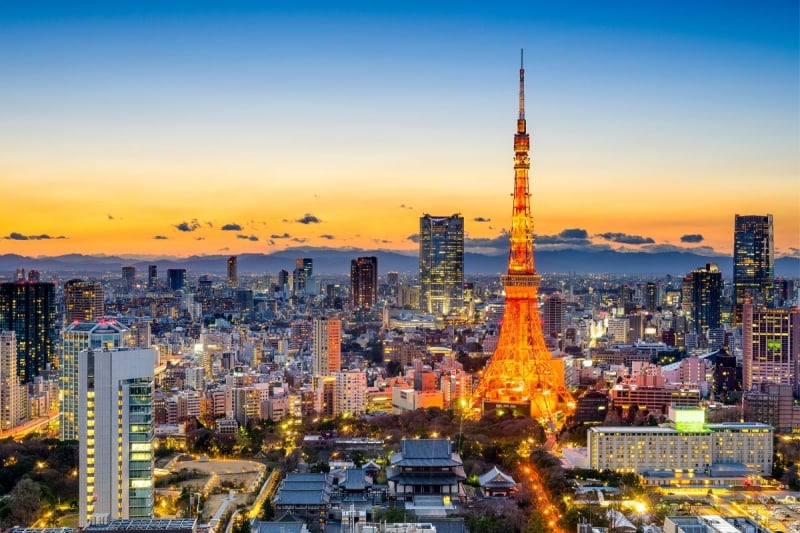
Image credit: SeanPavonePhoto via Canva Pro
Another must-see modern attraction is Tokyo Tower, the second tallest structure in Japan. Located in the heart of Tokyo, the tower gives visitors a commanding view of the city even though its observation deck stands at a moderate height of 150 metres.
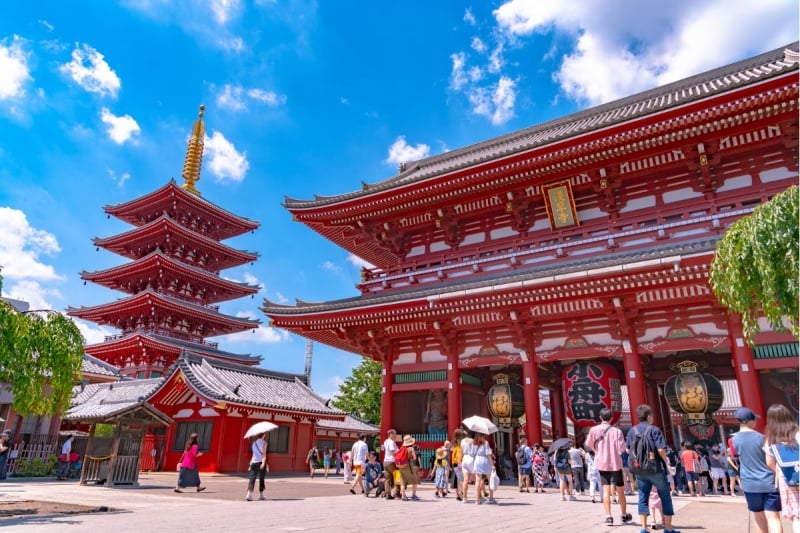
Image credit: Shawn.ccf via Canva Pro
Those interested in Japanese history should visit the Sensoji Temple, a seventh-century temple dedicated to the goddess, Kannon. Lying between the temple’s outer and second gate is the 200-metre-long Nakamise Street. This centuries-old shopping street is where you can buy traditional Japanese souvenirs and snacks.
To get some respite from the bustling city, take a stroll in Tokyo’s Ueno Park, which is extraordinarily beautiful in spring when covered with sakura. You can also catch a breather at Meiji Jingu, a tranquil Shinto shrine with lush forested trails and a massive torii gate.
Also read: 10 Family-Friendly Airbnb Apartments in Tokyo
Osaka
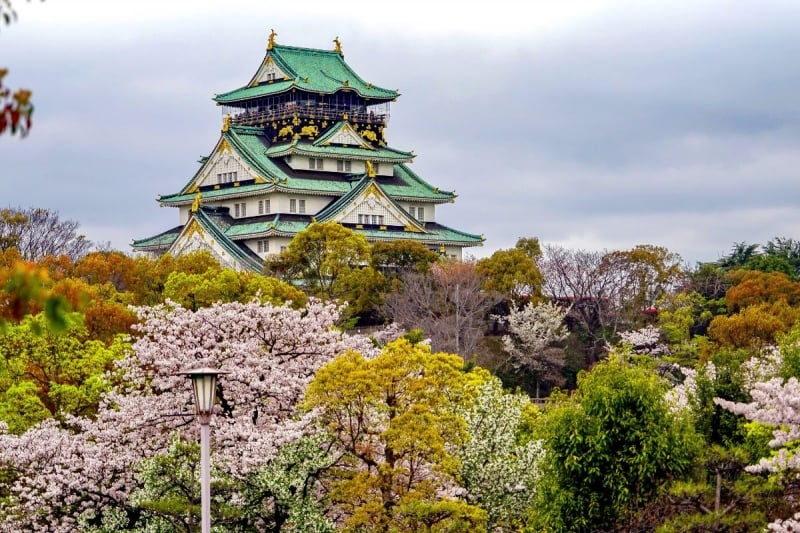
Image credit: nguyendinhson067 via Canva Pro
Osaka may not have as many attractions as Tokyo, but it still boasts a captivating blend of old and new. To appreciate traditional Japanese culture, make Osaka Castle your first stop. This 16th-century castle was built by Toyotomi Hideyoshi to be the centre of a unified Japan. Today, it is surrounded by a lovely park with over 600 cherry trees and a tea house.
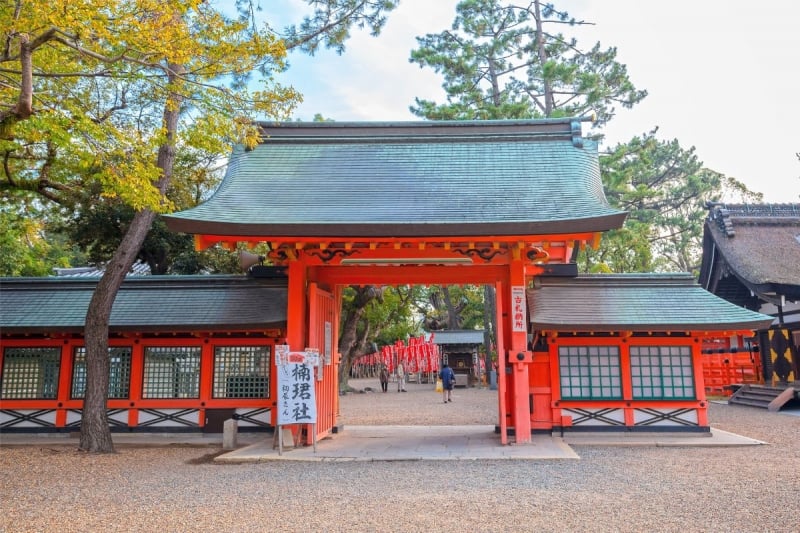
Image credit: Samart Boonyang via Canva Pro
Another historical gem is Sumiyoshi Taisha, a third-century Shinto shrine that predates the introduction of Buddhism to Japan. This distinctive shrine displays a purely Japanese architectural style known as Sumiyoshi-zukuri, which is characterised by straight roofs and gabled entrances.
Other culturally-rich sites in Osaka include Shittennoji Temple, the oldest official temple in Japan, and Namba Yasaka Shrine. The latter is dedicated to the Shi-Shi Dono guardian, who is believed to bring victory. Many people come here to pray for success in their studies and career.
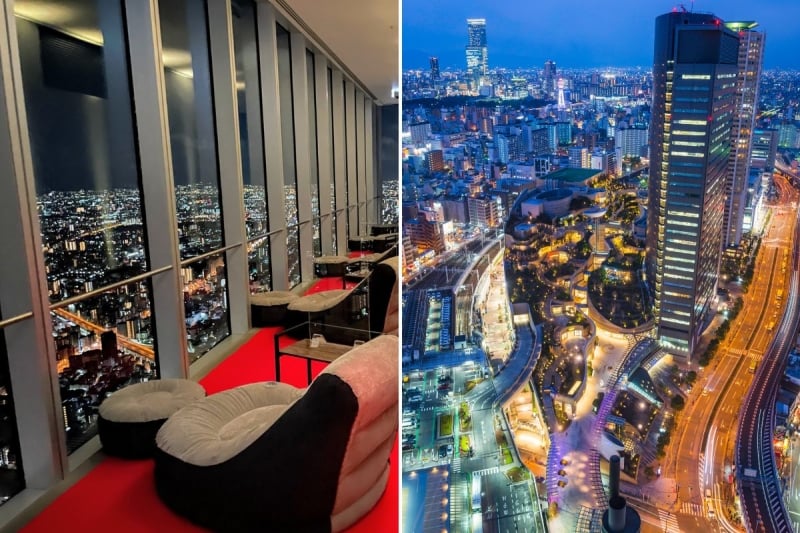
Image credit (L-R): Abeno Harukas Official Facebook Page; fotoVoyager via Canva Pro
For stunning skyline views, head to the observatory of Abeno Harukas, a skyscraper that stands over 300 metres. From here, you can see as far as Kyoto and Kobe. Zoom up to the cafe on the tower’s 58th floor for spectacular nighttime views.
In the battle of Tokyo vs Osaka attractions, Tokyo comes out on top for quantity, though Osaka doesn’t lag far behind. Furthermore, those who want to see more historical sites may prefer Osaka due to its proximity to Kyoto, the old capital of Japan. (Read on to find out more about travelling to Kyoto from Osaka!)
Also read: 15 Airbnbs in Osaka That Are Even Better Than Hotels
2. Day trips
Tokyo
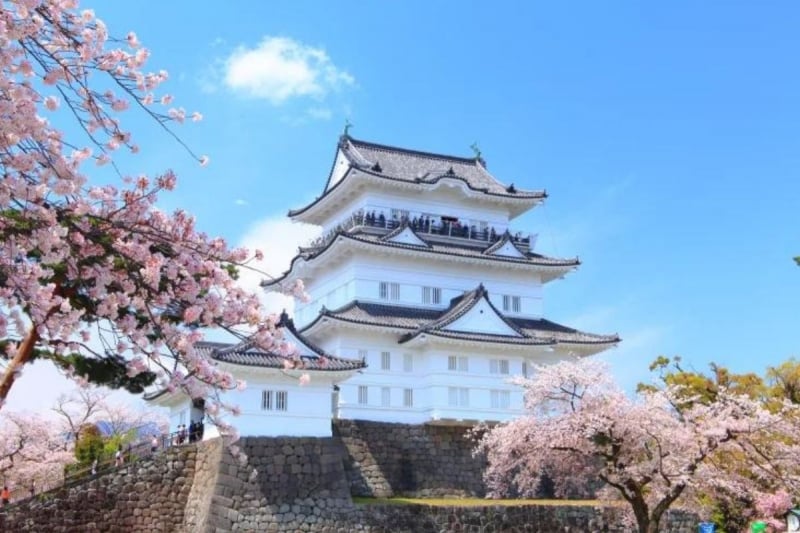
Image credit: Japan Tourism Official Website
Tokyo is in the Kanto Region, close to the cities of Odawara and Kamakura. Odawara is best known for Odawara Castle, the 15th-century base of the powerful Hojo clan. In spring, the castle is a prime spot for viewing cherry blossoms, plum blossoms, wisterias, azaleas, and other flowers.
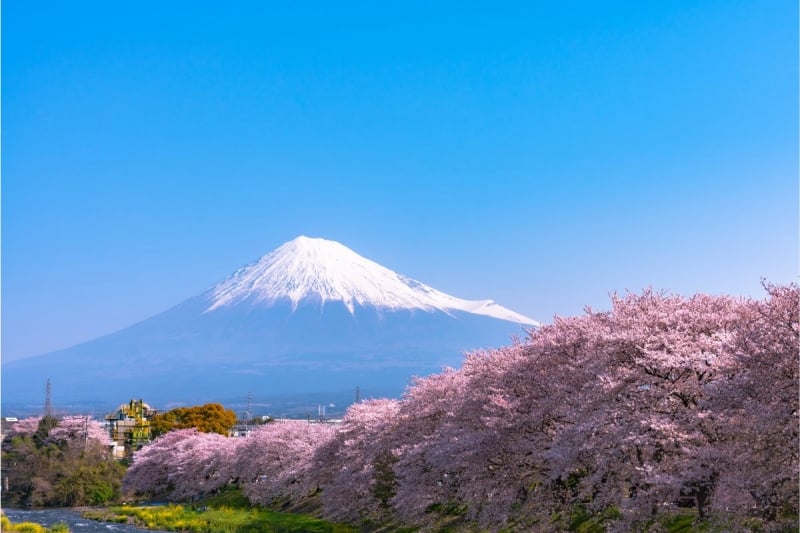
Image credit: Cheng Feng Chiang via Canva Pro
Kamakura used to be the political centre of eastern Japan. It boasts many historic temples, as well as a giant Buddha statue.
It is possible to do a day trip to Mount Fuji from Tokyo. From Shinjuku Station, the Limited Express Fuji Excursion takes people to the mountain in about two hours. You can climb Mount Fuji from July to early September. If you arrive in spring, the sight of the mountain framed by sakura flowers is sure to blow you away.
Osaka
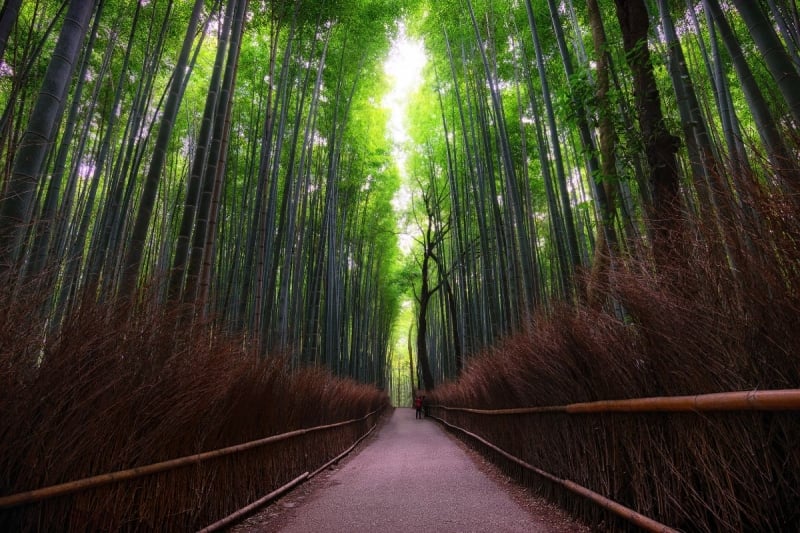
Image credit: Mikel Juaristi via Canva Pro
Osaka is in the Kansai Region, near the cities of Kyoto and Nara. Kyoto is only a 15-minute Shinkansen ride from Shin-Osaka Station, making it an ideal day trip. To make the most of your visit, head to the historic Arashiyama District. Here, you’ll find the dreamy Arashiyama Bamboo Grove, an otherworldly bamboo forest sure to give you a sense of inner peace.
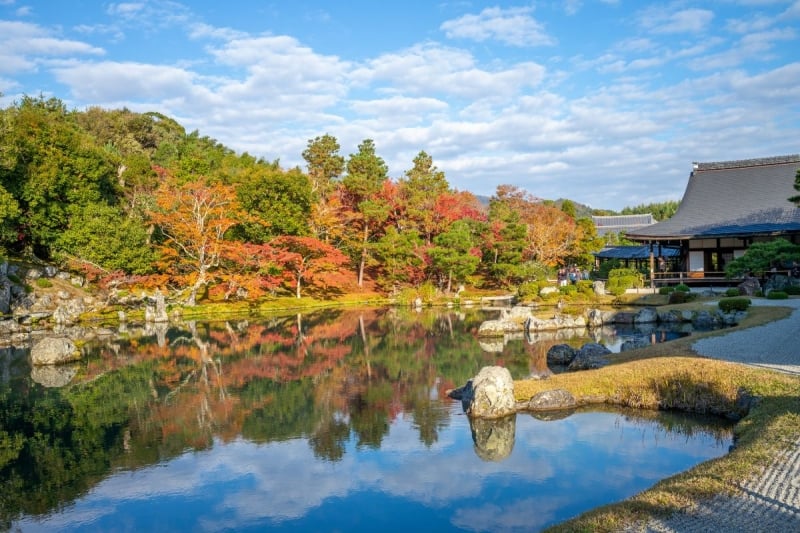
Image credit: Anton Fratila via Canva Pro
Numerous gorgeous temples are scattered across Arashiyama. The most notable is Tenryuji Temple, a World Heritage Site that holds an exquisite garden designed by the renowned garden designer, Muso Soseki. The garden is centred around a pond and showcases the beauty of changing seasons.
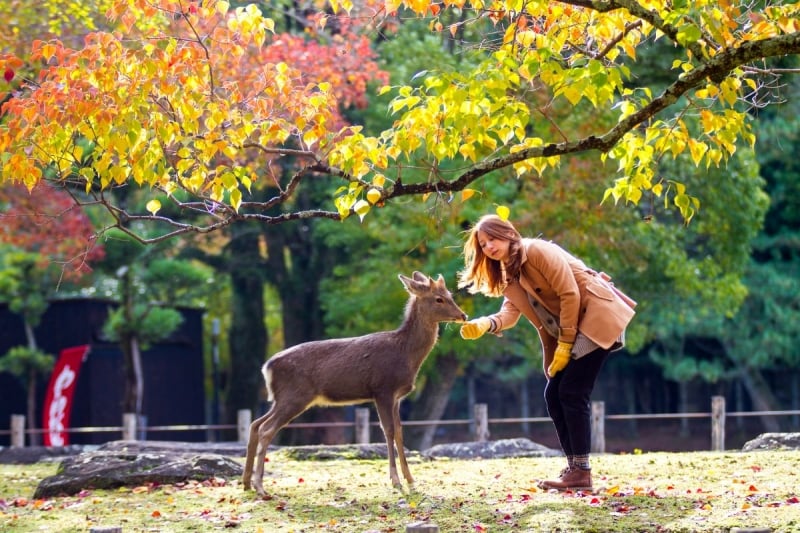
Image credit: NH 的影像 via Canva Pro
Nara is a 40-minute journey from Osaka Namba Station on the Kintetsu Nara Line. This city is famed for its adorable deer. Hundreds of them live in Nara Park and you can feed them if you wish.
3. Food
What trip to Japan would be complete without filling up on delectable food? Tokyo’s cuisine favours strong, rich flavours, heavily featuring bonito flake stock and dark soy sauce. In Osaka and the wider Kansai Region, the food leans towards light salty flavours. The dishes here are mostly based on seaweed broth and light soy sauce. Hence, which city in Japan is better food-wise depends on your personal taste.
Tokyo
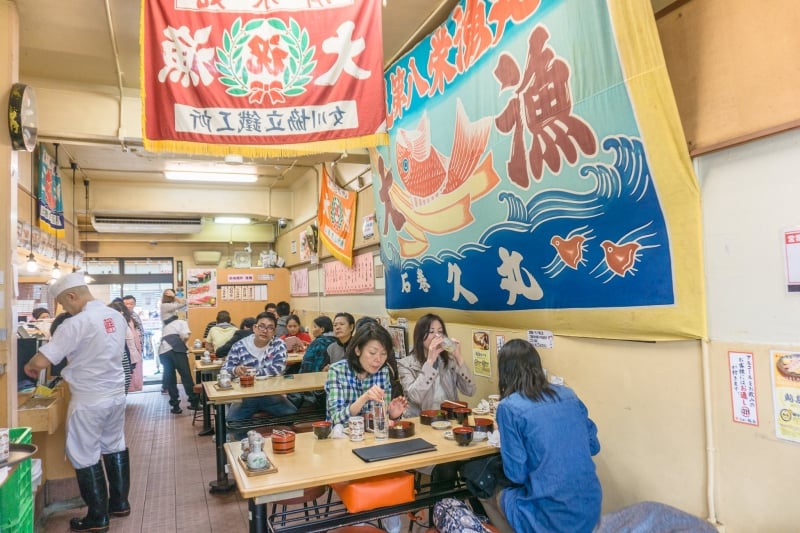
Image credit: IQRemix
One of the best foods to try in Tokyo is sushi, which can be found at a wide range of price points. Tokyo is close to the sea, so the fish used in sushi here is as fresh as it gets. Head to Tsukiji Market to learn about Tokyo’s fishing culture and sample delicious sashimi and sushi. Ramen and yakitori are also popular dishes that can be found in casual restaurants frequented by locals.
Also read: 12 Crazy Concept Cafes, Restaurants, and Bars in Tokyo
Osaka
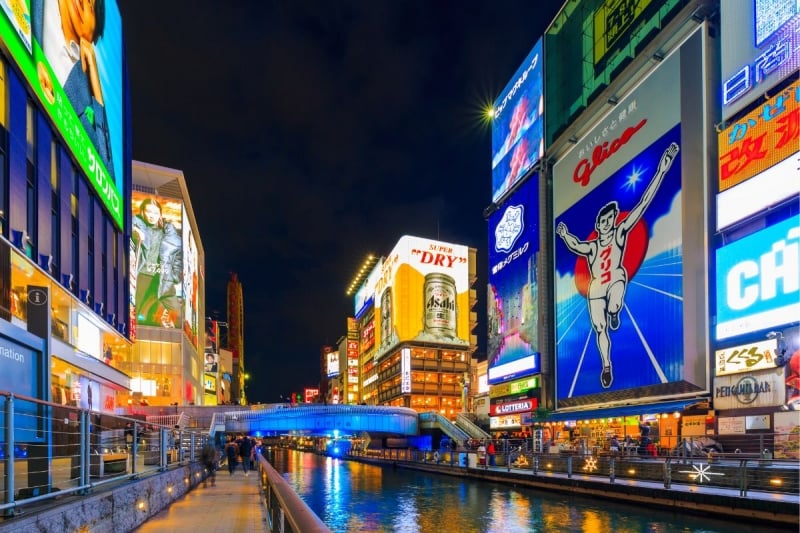
Image credit: AvigatorPhotographer via Canva Pro
Osaka has plenty of signature dishes, the most well-known being okonomiyaki (fried pancake), takoyaki (octopus balls), and kushikatsu (fried skewers). You can try them in Dotonbori, a neon-lit food district packed with affordable eateries.
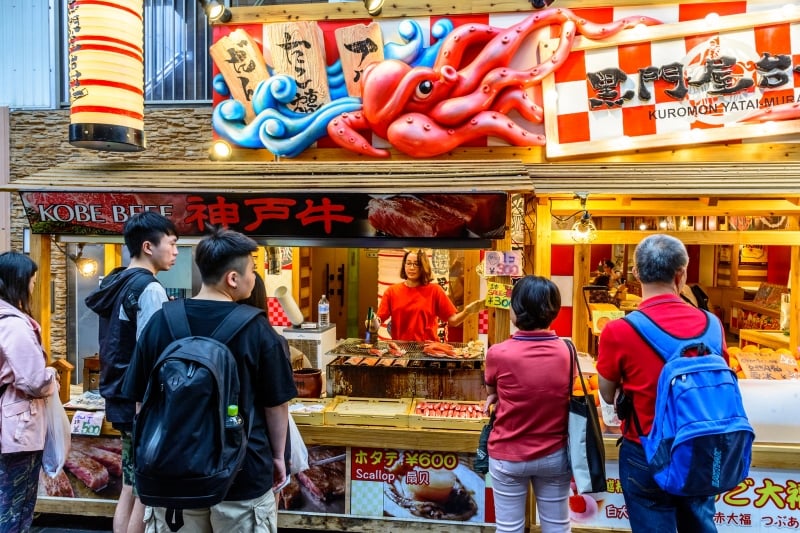
Image credit: Domenico Convertini
The city’s iconic food haven is Kuromon Market. In this market, you can gorge on authentic street food like grilled crab legs, oysters, takoyaki, and eel.
Also read: 30 Useful Japanese Phrases You Need to Learn Before Travelling to Japan
4. Shopping
The next aspect to consider when deciding between Tokyo vs Osaka is shopping. Both cities have amazing shopping, but Tokyo is the more expensive city, so shopping there may make a bigger dent in your wallet than in Osaka.
Also read: 10 Best Thrift Stores and Vintage Shops in Japan
Tokyo
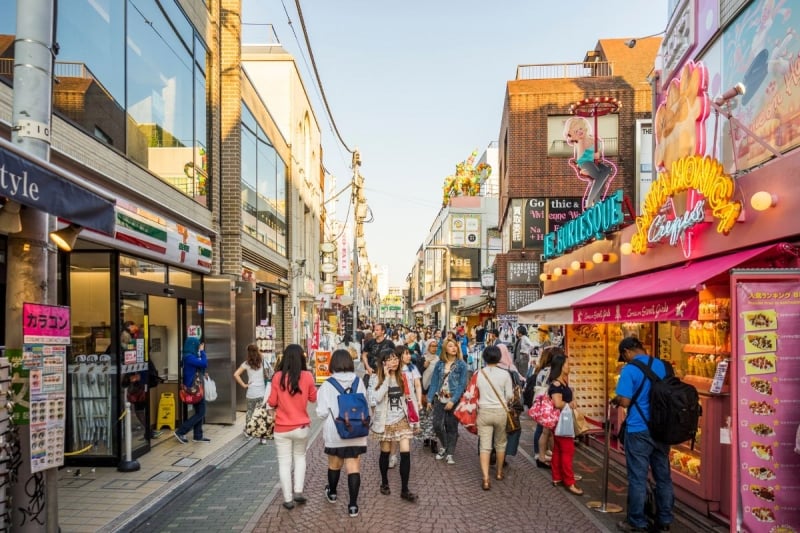
Image credit: visualspace via Canva Pro
As the nation’s capital, Tokyo has an unrivalled range of international brands in its shopping districts of Shibuya, Shinjuku, and Ginza. Shinjuku, in particular, is a shopper’s paradise, with its roster of goliath department stores that sell everything from fashion staples to electronics.
Start your shopping spree at Shinjuku Station. Connected to and around it are many department stores including Takashimaya Shinjuku, Lumine Shinjuku, and NeWoMan Shinjuku. Some stores offer tax rebates for foreign tourists, so you can save money while snagging great deals. For thrifty shoppers, there is Don Quijote, a massive discount store a three-minute walk from Shinjuku Station. Muji fans will also be delighted to know that the brand’s flagship store (which even has a basement cafe!) is only a four-minute walk away.
If you’re looking for niche Japanese fashion brands, go to Harajuku. Lovers of goth, lolita, punk, and other niche styles will feel at home along Takeshita Street, which houses many small, independent stores selling all sorts of quirky items. Six minutes on foot from Takeshita Street is Kiddy Land, a tax-free character goods heaven. Stretching over five floors, the store is stocked with merchandise from Sanrio, Disney, Marvel, Star Wars, and more.
Osaka
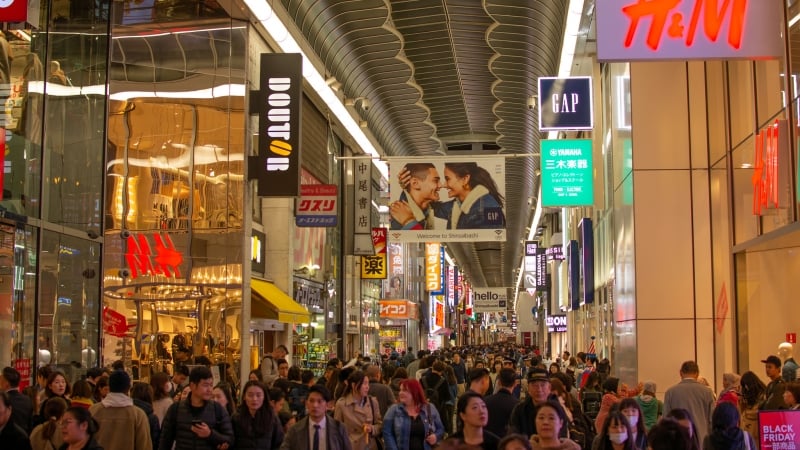
Image credit: Daniel Ramirez
Osaka has some great shopping along Shinsaibashi Shopping Street. Extending over 600 metres, it has many discount stores, fashion and beauty outlets, and character shops. To snag some great bargains, drop by the three-floor Daiso Shinsaibashi Store. Those who love cute cartoon characters should make a beeline for the Disney and Sanrio stores.
There’s also Amerika Mura, an area west of Shinsaibashi that has dozens of stores selling hip-hop, vintage, and urban fashion. A strong haggling culture exists in Osaka, due to its history as a merchant city. Just be polite when negotiating prices with shopkeepers.
5. Nightlife
Tokyo and Osaka probably have the most thrilling nightlife scenes in Japan. There’s so much to do in these cities after dark that you won’t want to go to bed early.
Tokyo
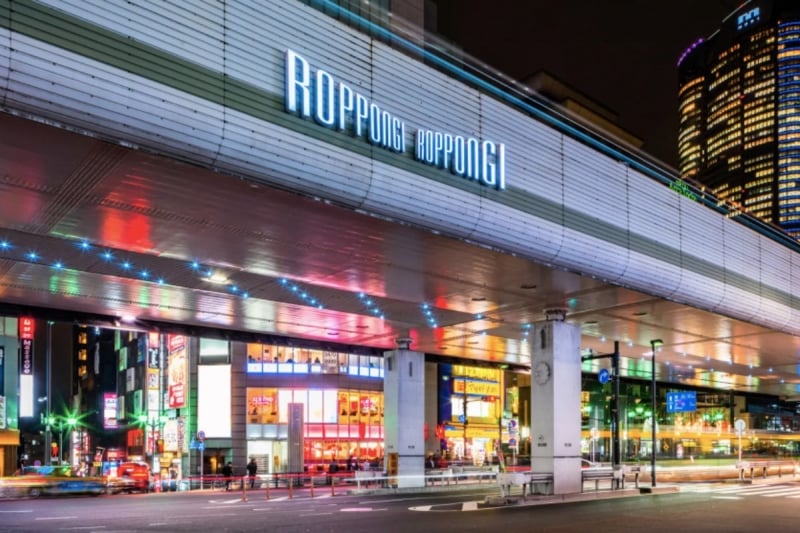
Image credit: Japan Tourism Official Website
The most happening nightlife area in Tokyo is Roppongi, home to a vast array of clubs and bars catering to EDM, hip-hop, jazz, and other musical tastes. Besides Roppongi, the Shinjuku and Shibuya districts are also the go-to places for clubbing.
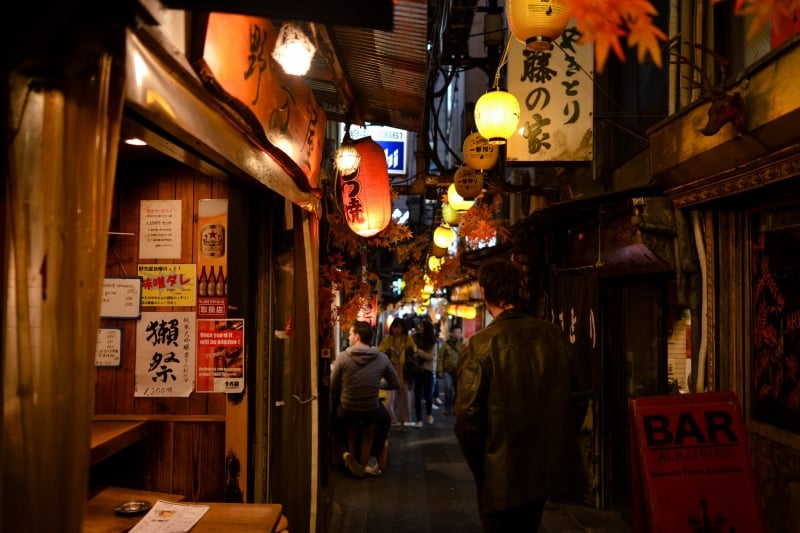
Image credit: KMrT
In Shinjuku, there is a narrow alley known as Omoide Yokocho (Memory Lane) with around 60 izakaya. An izakaya is a bar with only a few seats, allowing the customers to interact closely with the owner of the establishment. They offer a one-of-a-kind dining experience that every Japan-goer should try.
Also read: Tokyo Nightlife Guide: 12 Best Bars & Clubs to Enjoy the Local Scene
Osaka
Osaka’s nightlife is notable for its thriving live music scene. When night falls, come to the Namba and Shinsaibashi areas, where you will find many bars and clubs playing live jazz, rock, indie, and other music.
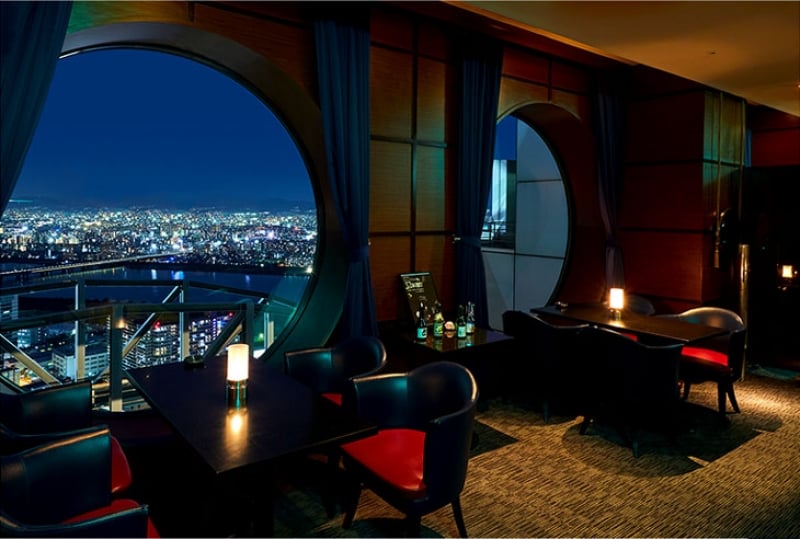
Image credit: Umeda Sky Building Official Website
There is also the Umeda Sky Building, a skyscraper with a bar on the 39th floor. This is where you can take in breathtaking views of the glittering city skyline at night. The skyscraper is only a 10-minute walk from Osaka Station.
Comparing nightlife in Tokyo vs Osaka is difficult as both cities are awash in sensational party spots, bars, and izakayas. As the cost of living in Osaka is lower, drinks and food here will be cheaper, making it a better option for those on a budget.
6. Budget
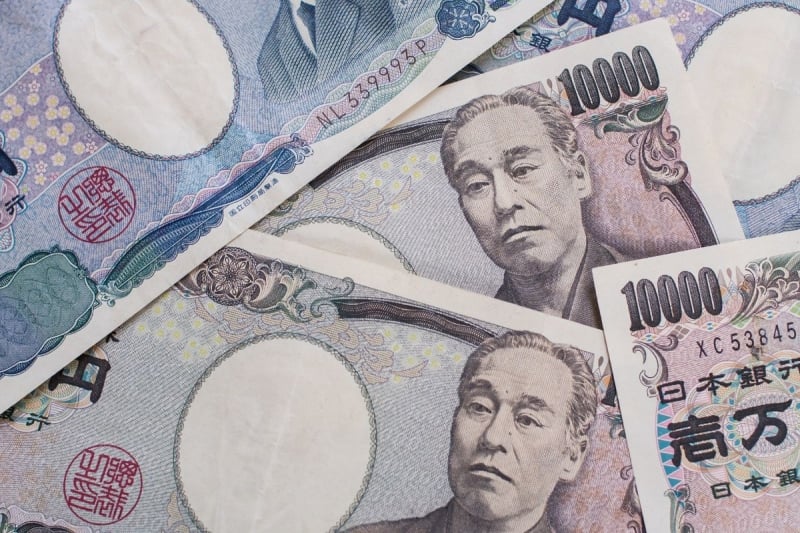
Image credit: JHK2303 via Canva Pro
Talking about budget, it’s time to count the costs of a vacation in Tokyo vs Osaka.
Tokyo
Compared to Osaka, Tokyo has a higher cost of living. The average daily cost of a Tokyo trip is ¥19,844 (~S$200) per person. On average, travellers spend ¥4,687 (~S$47) on meals for one day and ¥2,437 (~S$24.60) on transport. The average hotel rate in Tokyo for two people is ¥18,757 (~S$189). If you’re on a tight budget but can’t give up on your dream Tokyo adventure, try these money-saving hacks here.
Osaka
The average daily cost of an Osaka trip is ¥10,360 (~S$104.50) per person. On average, travellers spend ¥3,001 (~S$30) on meals for one day and ¥1,769 (~S$17.85) on transport. The average hotel rate in Osaka for two people is ¥10,490 (~S$105.85).
Whether you’re travelling to Tokyo or Osaka, there are ways you can stretch your budget. For example, staying in vacation rentals instead of hotels, and choosing street food over restaurants.
Also read: 8 Budget Travel Ideas for Visiting the Most Expensive Cities in the World
7. Transport
Both Osaka and Tokyo have efficient public transport systems. However, the trains can get very crowded during rush hour. Nevertheless, they run on time and can be used to get to most attractions.
Buses are not recommended for foreign tourists as not all of them have the information translated into English. Taxis are expensive in Japan; ride them only if you absolutely need to.
Tokyo
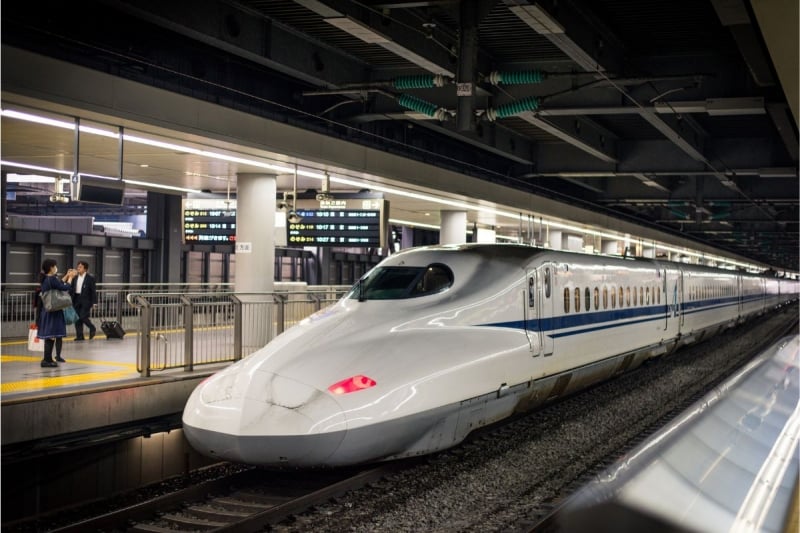
Image credit: oneinchpunch via Canva Pro
Within Tokyo, the easiest way to get around is by purchasing a prepaid Suica or Pasmo card, which can be used on JR East trains, the subway, and buses. You can buy these cards at the airport, or at subway and JR stations. For long-distance travel, buy a JR Pass which gives you unlimited rides on JR trains (shinkansen, limited express, express, rapid and local trains) for one, two, or three weeks.
Osaka
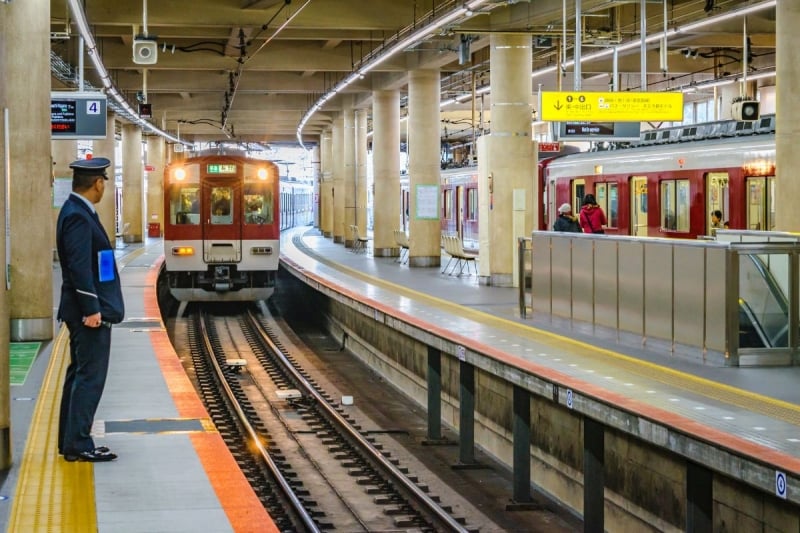
Image credit: DanFLCreativo via Canva Pro
Osaka has its own prepaid transport card called Icoca. However, you do not need to buy another card if you’re coming from Tokyo since Suica and Pasmo cards work here as well. One thing to note is that people in Osaka stand on the right side of escalators, while the etiquette in Tokyo is to stand on the left.
The TZ verdict on Tokyo vs Osaka
Ultimately, there is no right answer as to which city in Japan you should choose. Both Tokyo and Osaka have their characteristic charms and appeal to different people. If you dream of a high-energy city with an unmatched variety of attractions, go for Tokyo. On the other hand, those who want a slower trip and prefer the delicate flavours of Kansai food would find Osaka a better choice.
Also read: Bali vs Phuket: Which Popular Southeast Asian Island Should You See First?
So what do you think of our comparison of Tokyo vs Osaka? Share your tips for each city on our Facebook page!
Featured image credit (L-R): Sean Pavone; f11photo via Canva Pro




